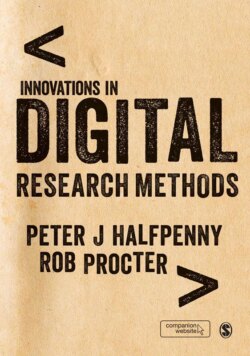Читать книгу Innovations in Digital Research Methods - Группа авторов - Страница 50
На сайте Литреса книга снята с продажи.
2.3.4 Data on Education, Training and Employment
ОглавлениеKey data sources in the UK for examining patterns in education and training include the Census and the Labour Force Survey as discussed above. The cohort studies in the UK also provide access to information on education and training and its role in people’s lives in the longer term. There are three large UK cohort studies, which each include over 17,000 people in their samples: the 1958 National Child Development Study (NCDS), the 1970 British Cohort Study (BCS) and the Millennium Cohort Study (MCS).59 Participants are surveyed usually every 6–8 years, although the MCS is surveying at higher frequency during the early years. Each of these studies includes questions on family background, education, socio-economic circumstances, attitudes, life transitions and health. Both the 1958 cohort and the 1970 cohort are now very rich data sources with detailed information on substantial periods of people’s lives. Access to such data is free.
The Longitudinal Study of Young People in England60 includes questions on key demographics and covers such issues as school course options, extra-curricular classes, parental expectations and aspirations, household responsibilities, resources, absences, truancy, police contact and bullying.
Consequential administrative record data are also available for examining qualification levels of school pupils. The School Census61 is an annual exercise collated from UK school records. As well as school performance scores, the data includes information on each pupil’s: home postcode, school name, Free School Meal (FSM) entitlement, Special Educational Needs (SEN) status, gender, ethnicity and mother tongue. Access to such data is free, though researcher approval is required and the data have to be used under certain confidentiality conditions.
Other sources of data on education, training and employment might include: online discussion boards of career changes, training feedback, returning to work and individuals searching for work who create their own blogs. One anonymous example reads:
Hard working 19 year old farm worker looking for work placement on a mixed farm to progress onto an advanced apprenticeship level 3 ideally in the South/SW. (Anonymous, 2011)
Here a social science researcher could code for: type of job, age, gender and geography as well as language use and skills. They could also follow the blogger’s Twitter feed to see if the person’s circumstances change. Of course, as discussed in Chapter 12 (section 12.6), this does raise ethical issues concerning identification and disclosure. An anonymous example from a discussion forum reads:
The chances of getting another job with a company that will allow me to work part time and are understanding of the caring issues (so emergency time off when carers don’t come) is zero. And I am 45. (Anonymous, 2011)
A social science researcher could code for: age, caring roles, type of employment desired as well as linking with other posts. The data has similarities with ‘vox pop’ interviews where there is no structured sample frame. But the nature of social media provides the tools for follow-up contact, and linking to other information and sources. However, as has been outlined above, without a sample frame the value of such data is predominantly in terms of the details of individual experiences rather than as a basis for generalizing to a wider population. Moreover, blog posts need to be checked for being accurate representations, as far as that is possible.
